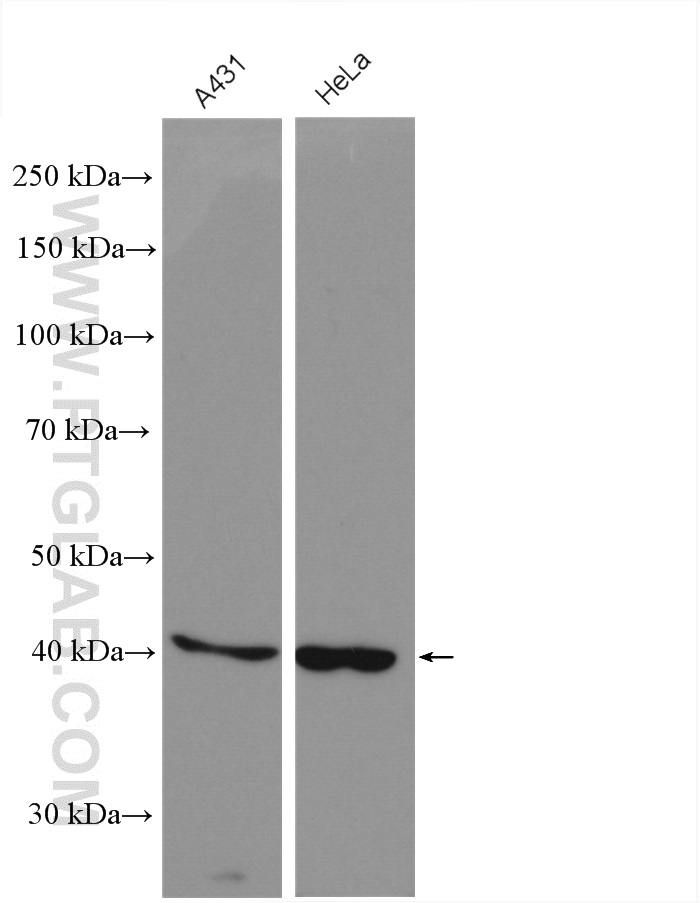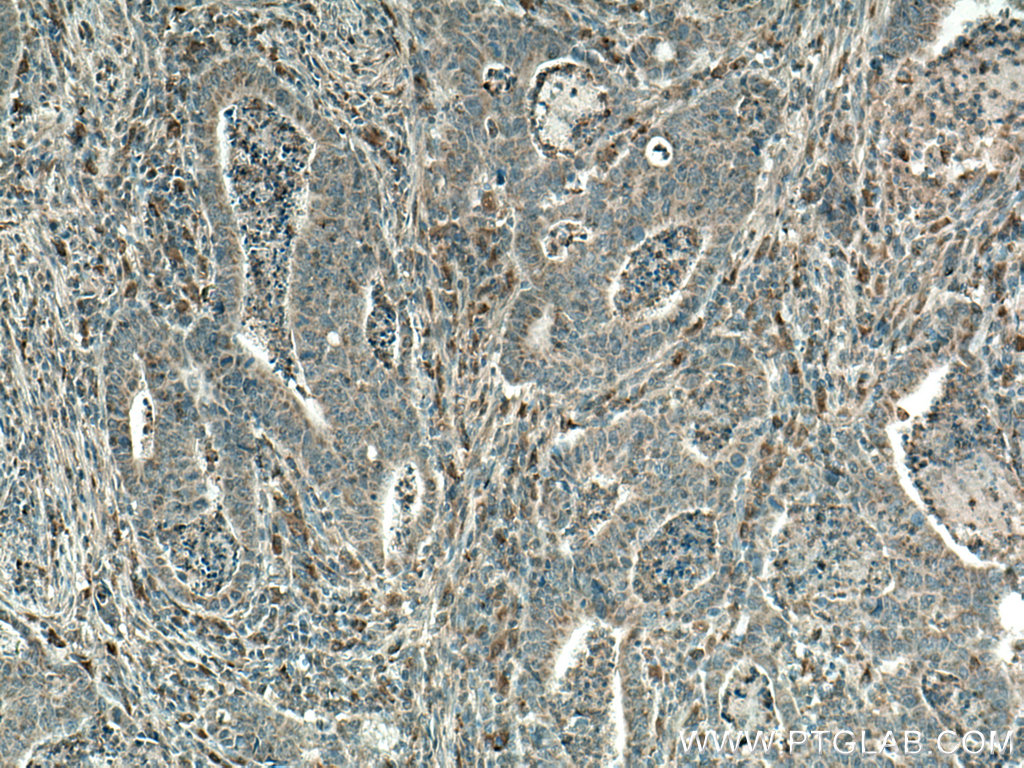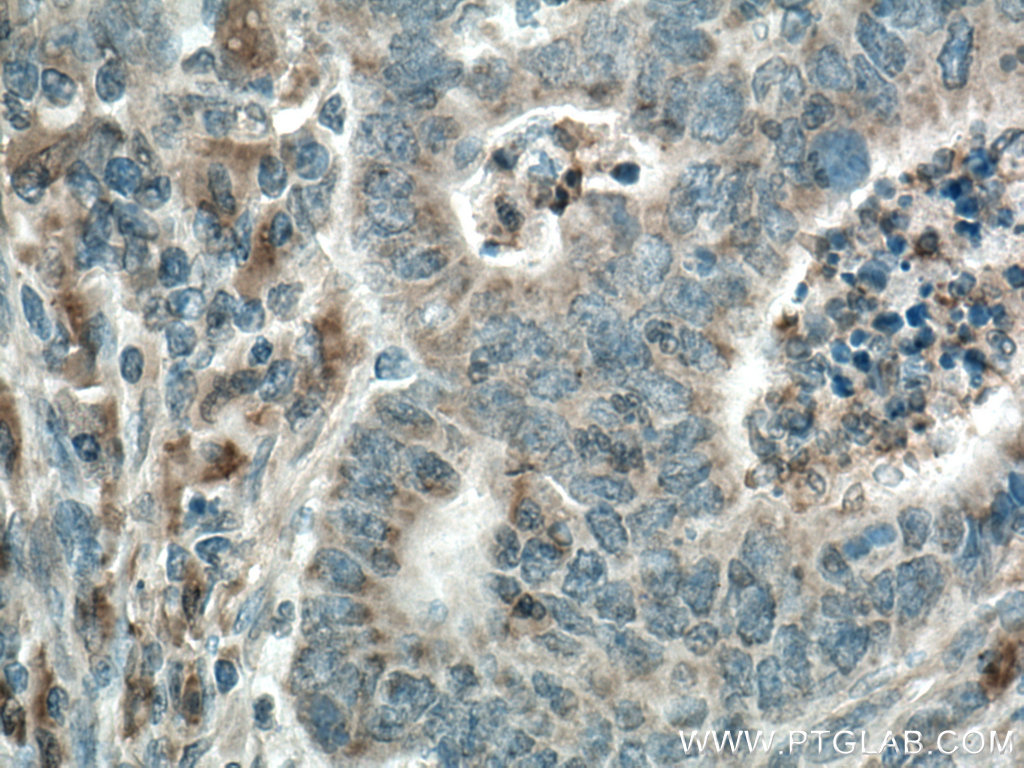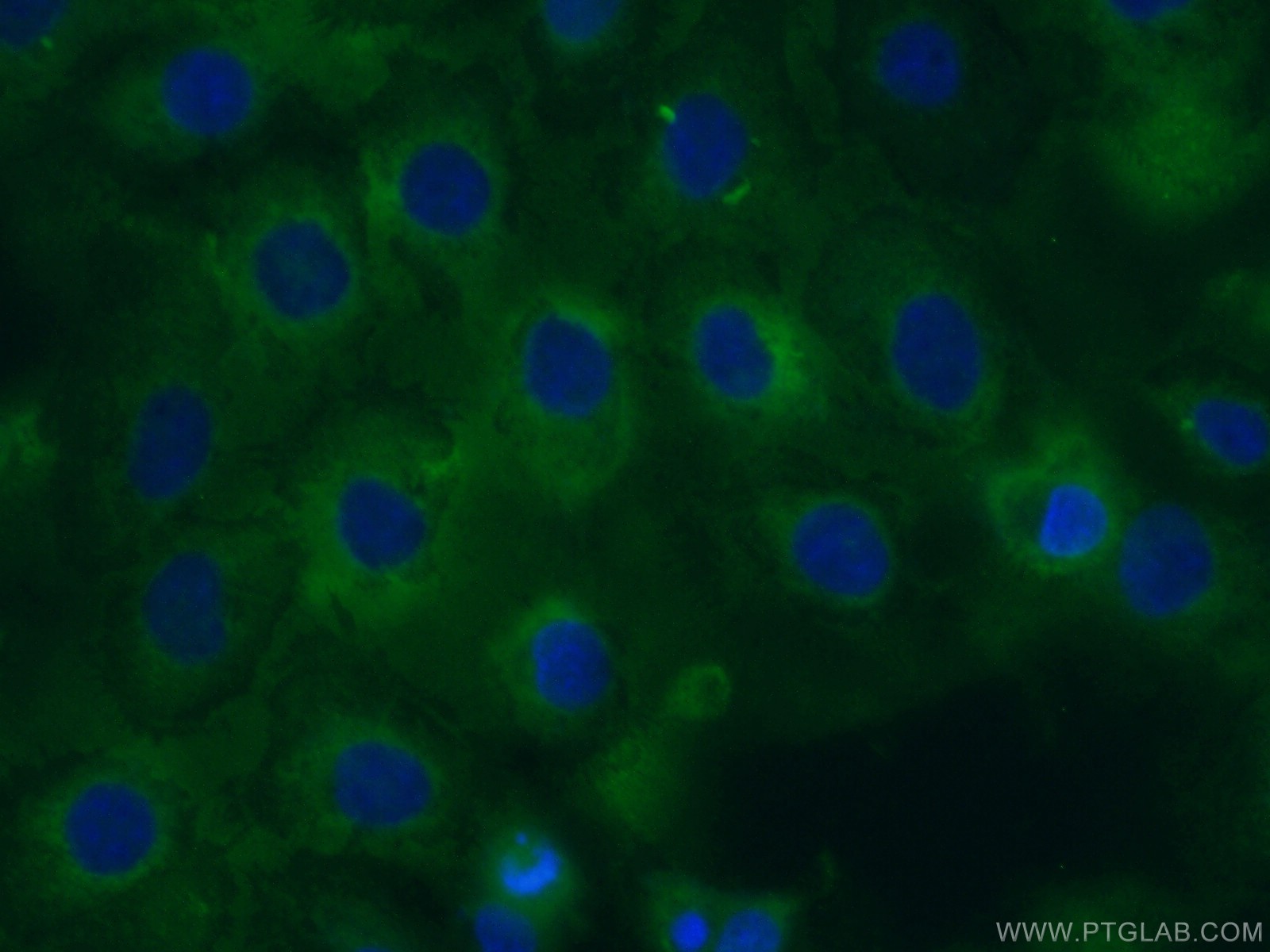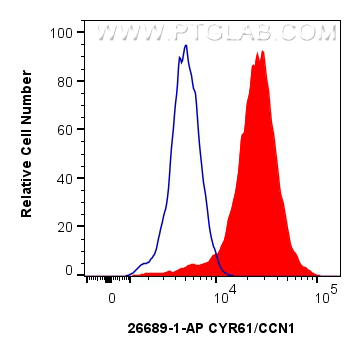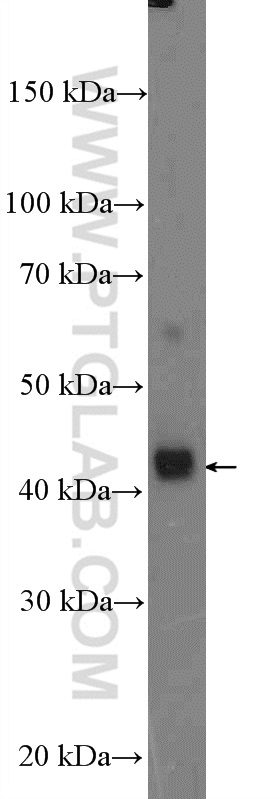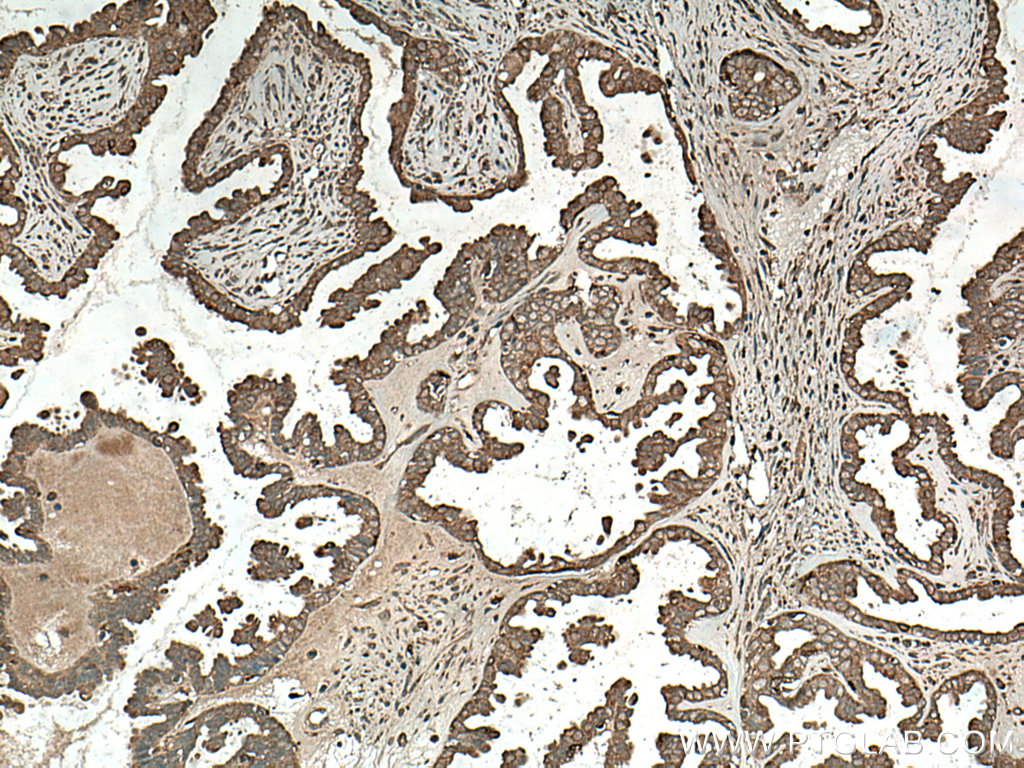验证数据展示
经过测试的应用
| Positive WB detected in | A431 cells, MDA-MB-453s cells, HeLa cells |
| Positive IHC detected in | human colon cancer tissue, human ovary tumor tissue Note: suggested antigen retrieval with TE buffer pH 9.0; (*) Alternatively, antigen retrieval may be performed with citrate buffer pH 6.0 |
| Positive IF/ICC detected in | A431 cells |
| Positive FC (Intra) detected in | HeLa cells |
推荐稀释比
| 应用 | 推荐稀释比 |
|---|---|
| Western Blot (WB) | WB : 1:1000-1:4000 |
| Immunohistochemistry (IHC) | IHC : 1:50-1:500 |
| Immunofluorescence (IF)/ICC | IF/ICC : 1:50-1:500 |
| Flow Cytometry (FC) (INTRA) | FC (INTRA) : 0.25 ug per 10^6 cells in a 100 µl suspension |
| It is recommended that this reagent should be titrated in each testing system to obtain optimal results. | |
| Sample-dependent, Check data in validation data gallery. | |
产品信息
26689-1-AP targets CYR61/CCN1 in WB, IHC, IF/ICC, FC (Intra), IP, ELISA applications and shows reactivity with human samples.
| 经测试应用 | WB, IHC, IF/ICC, FC (Intra), ELISA Application Description |
| 文献引用应用 | WB, IHC, IF, IP |
| 经测试反应性 | human |
| 文献引用反应性 | human, mouse, rat |
| 免疫原 | CYR61/CCN1 fusion protein Ag25129 种属同源性预测 |
| 宿主/亚型 | Rabbit / IgG |
| 抗体类别 | Polyclonal |
| 产品类型 | Antibody |
| 全称 | cysteine-rich, angiogenic inducer, 61 |
| 别名 | CYR61, cysteine-rich protein 61, Cysteine-rich angiogenic inducer 61, Cellular communication network factor 1, CCN1 |
| 计算分子量 | 42 kDa |
| 观测分子量 | 42 kDa |
| GenBank蛋白编号 | BC001271 |
| 基因名称 | CYR61 |
| Gene ID (NCBI) | 3491 |
| RRID | AB_2880604 |
| 偶联类型 | Unconjugated |
| 形式 | Liquid |
| 纯化方式 | Antigen affinity purification |
| UNIPROT ID | O00622 |
| 储存缓冲液 | PBS with 0.02% sodium azide and 50% glycerol , pH 7.3 |
| 储存条件 | Store at -20°C. Stable for one year after shipment. Aliquoting is unnecessary for -20oC storage. |
背景介绍
CYR61 is a member of the CYR61/CTGF/NOV (CCN) protein family. CYR61 participated in cell mitogenesis, cellular adhesion, migration, differentiation, angiogenesis, and survival. Cyr61 is especially associated with diseases related to chronic inflammation, including RA, Crohn's disease and ulcerative colitis. CYR61 may serve essential roles as either an oncogene or a tumor suppressor, depending on the cancer cell type. CYR61 also induces angiogenesis, which supplies oxygen and nutrients to tumors during growth. CYR61 can also play a role in the proliferation, invasion, survival, and metastasis of cancer cells.
实验方案
| Product Specific Protocols | |
|---|---|
| WB protocol for CYR61/CCN1 antibody 26689-1-AP | Download protocol |
| IHC protocol for CYR61/CCN1 antibody 26689-1-AP | Download protocol |
| IF protocol for CYR61/CCN1 antibody 26689-1-AP | Download protocol |
| Standard Protocols | |
|---|---|
| Click here to view our Standard Protocols |
发表文章
| Species | Application | Title |
|---|---|---|
EMBO J MST2 methylation by PRMT5 inhibits Hippo signaling and promotes pancreatic cancer progression | ||
ACS Appl Mater Interfaces A Novel Electrochemiluminescent Immunoassay Based on Target Transformation Assisted with Catalyzed Hairpin Assembly Amplification for the Ultrasensitive Bioassay. | ||
Acta Pharmacol Sin Urolithin A promotes atherosclerotic plaque stability by limiting inflammation and hypercholesteremia in Apolipoprotein E-deficient mice | ||
Mol Ther Nucleic Acids The RNA binding protein QKI5 suppresses ovarian cancer via downregulating transcriptional coactivator TAZ. | ||
Cell Death Dis EGFR-PI3K-PDK1 pathway regulates YAP signaling in hepatocellular carcinoma: the mechanism and its implications in targeted therapy. |
